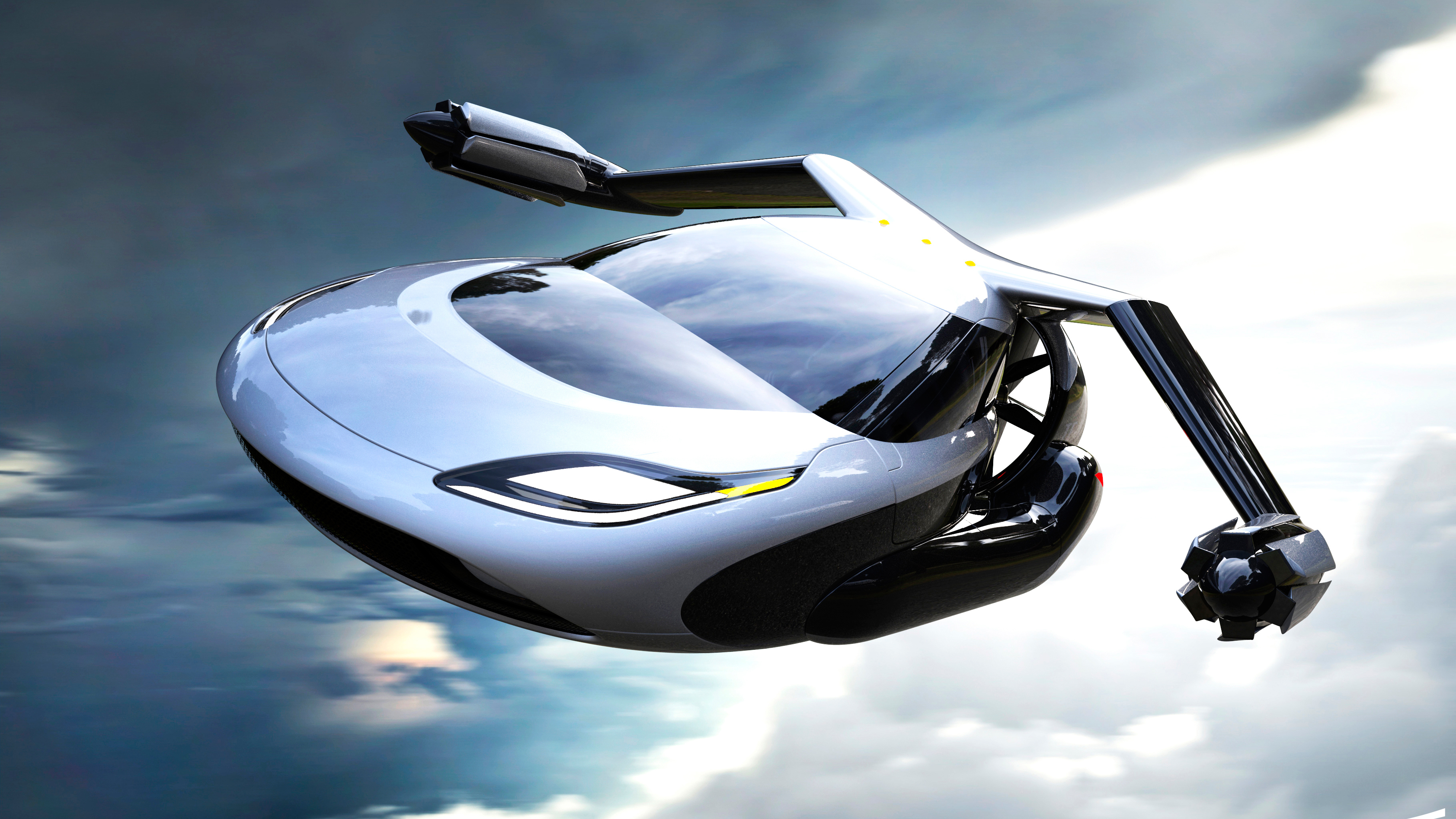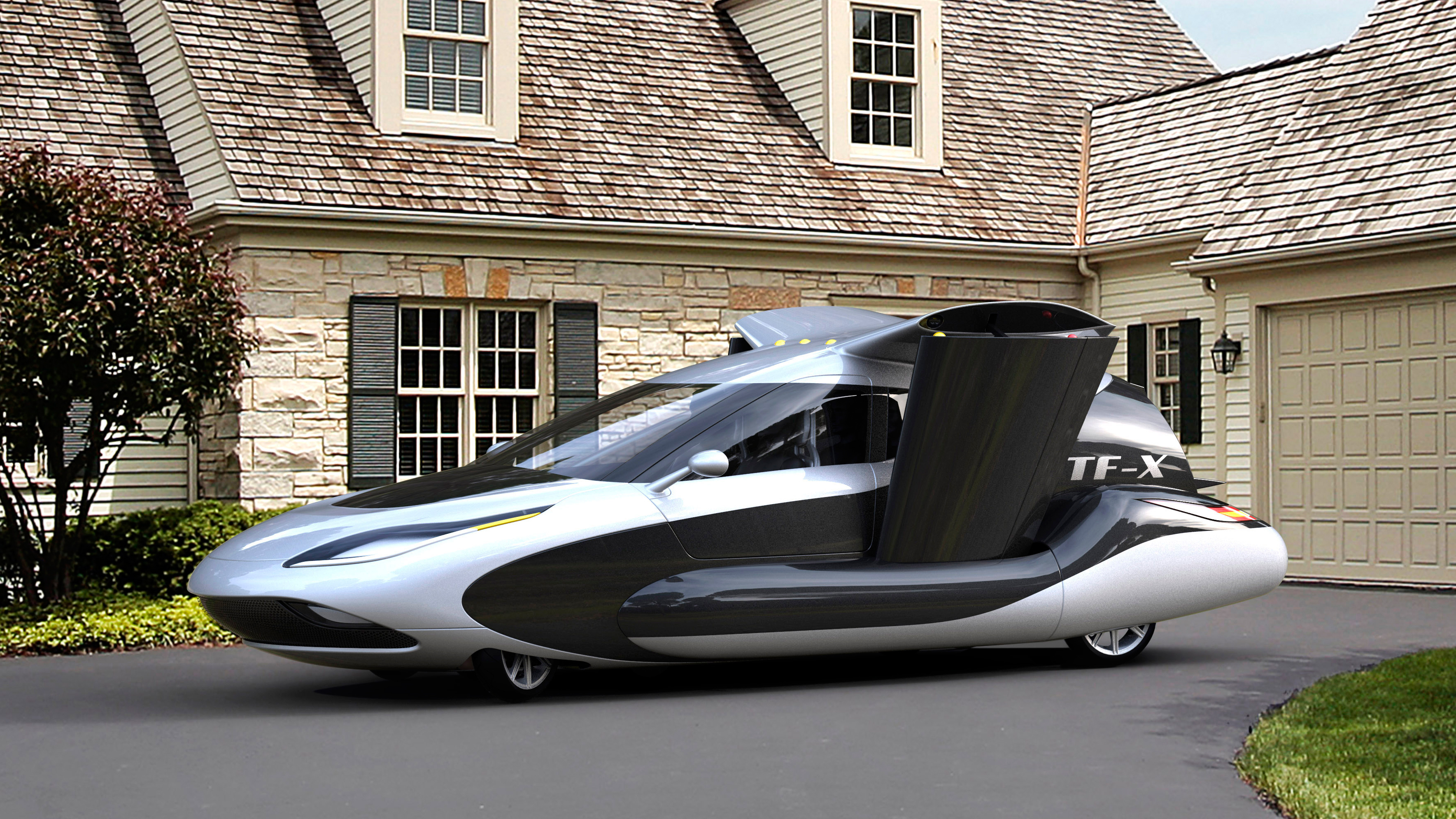
The flying car is here at last! It's Terrafugia's TF-X
Hybrid four-seater will soar for distances of 500 miles. But not until some time next decade. Maybe
Well, it’s about time. Since the 1950s, we’ve been promised flying cars were just around the corner. But despite a steady stream of outlandish concepts, a working car-o-plane has always remained frustratingly, tantalizingly out of reach.
Until now.
This is the Terrafugia TF-X, and it is surely the answer to our airborne automotive prayers. Built by the Boston-based outfit behind the still-not-yet-in-production Transition, it’s a bold vision of a transportation future unbounded by roads, runways or pleasing aesthetics.
As you’ll see from the video above, the TF-X – which will seat four open-minded humans – is capable of vertical take-off, thus negating the need for a runway. Wings furled, it’ll squeeze into a standard single garage, thus negating the need for a hanger in which to store your personal plane.
It’s powered by a plug-in hybrid arrangement, a pair of electric motors combining with a 300bhp petrol engine to produce a frickin’ megawatt of output. Aerial thrust is provided by a ducted fan at the rear, and a propeller at the end of each retractable wing.
We don’t know how fast the TF-X will go on road, but once airborne it’ll soar at speeds of 200mph for a distance of up to 500 miles. Which means you could hop from London to Geneva in under three hours, and in a single bound. It’s the future we were always promised. We’re in.
However. There are, admittedly, a few tiny issues with the TF-X. First, as you may have deduced from the rather renderised images, it doesn’t actually exist yet.
Terrafugia admits bringing the flying car to production is a process ‘expected to last 8-12 years’, which means, realistically, it’ll be the middle of next decade before we see one on the driveway of TG Towers.
It’s as yet unclear exactly how much the TF-X might cost, but Terrafugia has hinted that the final price ‘could be on-par with the very high-end luxury cars of today’. But hey, does a Bugatti Veyron afford the opportunity to evade traffic jams by leaping over them?
And then there’s the wider issue of safety and legislation, both of which have played a significant role in scuppering previous flying car attempts.
Top Gear
Newsletter
Thank you for subscribing to our newsletter. Look out for your regular round-up of news, reviews and offers in your inbox.
Get all the latest news, reviews and exclusives, direct to your inbox.
Terrafugia reckons the TF-X ‘should be statistically safer than driving a modern automobile’, and says learning to fly it will take just five hours of training.
That’s thanks, at least in part, to a high degree of autonomy: once airborne, the TF-X will effectively fly itself – though the driver can override the controls – and land automatically, without human input.
In the event of failure, the TF-X can deploy its full-vehicle parachute, allowing, hopefully, the flying car to float safely down to terra firma.
Foolproof in theory, but convincing both the car-buying public and the lawmakers that filling the sky with personal planes is a safe, sensible thing to do will remain a challenge for a while to come. Consider the muddle legislators are getting into around self-driving cars right now, then add the vertical dimension into the mix, and it’s clear the world’s lawmakers will need every one of those eight-to-twelve years of development to figure out the car-o-plane small print.
Top Gear yields to no one in its desire for a flying car, and the TF-X looks to be one of the most convincing efforts to date. But must the airborne automobile overcome just too many hurdles to ever become a viable reality? Let us know your thoughts below…
Trending this week
- Car Review
BMW iX3









